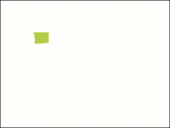O (kana)
| Hiragana | Katakana | ||||||||||||||||||||||||||||||||||||||||||||||||||||||||||||||||||||||||
|---|---|---|---|---|---|---|---|---|---|---|---|---|---|---|---|---|---|---|---|---|---|---|---|---|---|---|---|---|---|---|---|---|---|---|---|---|---|---|---|---|---|---|---|---|---|---|---|---|---|---|---|---|---|---|---|---|---|---|---|---|---|---|---|---|---|---|---|---|---|---|---|---|---|

|

|
||||||||||||||||||||||||||||||||||||||||||||||||||||||||||||||||||||||||
| Stroke order | |||||||||||||||||||||||||||||||||||||||||||||||||||||||||||||||||||||||||
|
|
|
||||||||||||||||||||||||||||||||||||||||||||||||||||||||||||||||||||||||
| Unicode | |||||||||||||||||||||||||||||||||||||||||||||||||||||||||||||||||||||||||
| U + 304A | U + 30AA | ||||||||||||||||||||||||||||||||||||||||||||||||||||||||||||||||||||||||
| origin | |||||||||||||||||||||||||||||||||||||||||||||||||||||||||||||||||||||||||
| 於 | 於 | ||||||||||||||||||||||||||||||||||||||||||||||||||||||||||||||||||||||||
| Transliteration | |||||||||||||||||||||||||||||||||||||||||||||||||||||||||||||||||||||||||
| Kunrei : | O | ||||||||||||||||||||||||||||||||||||||||||||||||||||||||||||||||||||||||
| Hepburn : | O | ||||||||||||||||||||||||||||||||||||||||||||||||||||||||||||||||||||||||
| 50 sounds board | |||||||||||||||||||||||||||||||||||||||||||||||||||||||||||||||||||||||||
|
|||||||||||||||||||||||||||||||||||||||||||||||||||||||||||||||||||||||||
The syllable characters (kana) お ( hiragana ) and オ ( katakana ) ( romanized o ) take fifth place in the Japanese alphabet, it is between え and か . In the Iroha it is at number 27, between の and く . In the adjacent table (sorted by columns, from right to left) お is in the first column ( あ 行 , "A column") and in the fifth row ( お 段 , "O row"). Both represent [ [o] ] .
| shape | Rōmaji | Hiragana | Katakana |
|---|---|---|---|
| Normal a / i / u / e / o ( あ 行 a-gyō ) |
O | お | オ |
|
ou oo , oh ō |
お う, お ぅ お お, お ぉ お ー |
オ ウ, オ ゥ オ オ, オ ォ オ ー |
Derivation
お and オ were derived from the Kanji 於 via man'yōgana .
variants
The reduced forms of the kana (ぉ, ォ) are used to represent foreign phones in the Japanese language , for example フ ォ (fo).
Stroke order
The hiragana お is drawn with three lines :
- A short horizontal line at the top left.
- Above through the middle of the first line a vertical line downwards, then a short diagonal upwards to the left, followed by an open curve (similar to a three-quarters "o") to the right and then ending at the bottom just to the right of the vertical.
- In the middle right a short, curved diagonal line above the arch of the second line.
The katakana オ consists of three strokes:
- At the top a horizontal line from left to right.
- At the top right a line vertically downwards through the right third of the first line.
- Starting from the intersection of the two lines a diagonal to the bottom left.
Other forms of representation
- In Japanese Braille :
- The Wabun code is: ・ - ・ ・ ・
- In the Japanese spelling table it is spelled as "大阪 の オ" (Osaka no O).
Usage and grammar
- as a courtesy prefix
- To express politeness, Hiragana お can be placed in front of various parts of speech (usually the noun, verb or the Japanese forms of the adverb and adjective ( Keiyoushi, Keiyoudoshi and Rentaishi )).
“Example: お 名 前 は 何 と お っ し ゃ い ま す か。
Onamae wa nan to osshaimasu ka.
What's your name?"
-
literature
- Seiichi Makino; Michio Tsutsui: A dictionary of basic japanese grammar. Tokyo, The Japan Times, 1992 ISBN 4-7890-0454-6
- Langenscheidt's Japanese learning dictionary. Edited by The Japanese Foundation. Japanese Language Institute, Berlin a. a. 1993 ISBN 3-468-49019-4
- Hideichi Ono: Japanese Grammar. Tokyo, Hokuseido Press, 1990 ISBN 4-590-00399-6
- Wolfgang Hadamitzky: Handbook and Lexicon of Japanese Writing. Kanji and Kana 1. Berlin a. a., Langenscheidt 1995, ISBN 3-468-49388-6
Individual evidence
- ↑ Handbook and Lexicon of Japanese Writing, pp. 18–19, Derivation tables for the Hiragana and Katakana. See also: derivation table of the kana signs # vowel series
- ↑ See also the fifty-lute table plus additions, e.g. manual and lexicon of Japanese writing, p. 22
- ↑ Information on Braille
- ↑ A dictionary of basic japanese grammar, p 343
- ↑ Langenscheidt's Japanese learning dictionary, p. 558
Web links
Wiktionary: お - Explanations of meanings, word origins, synonyms, translations



